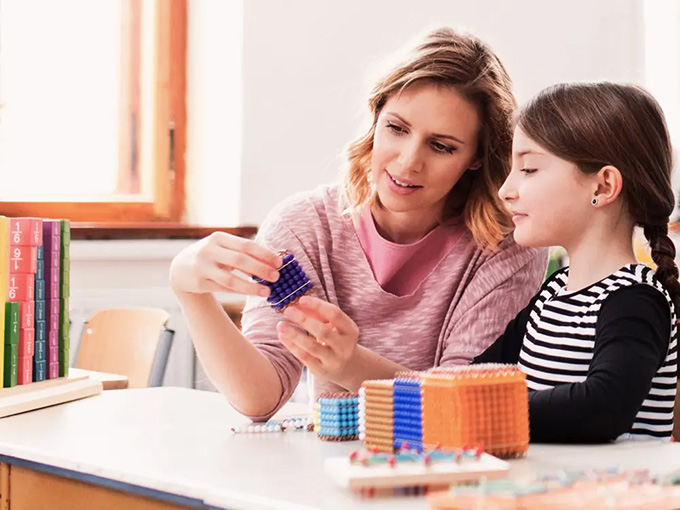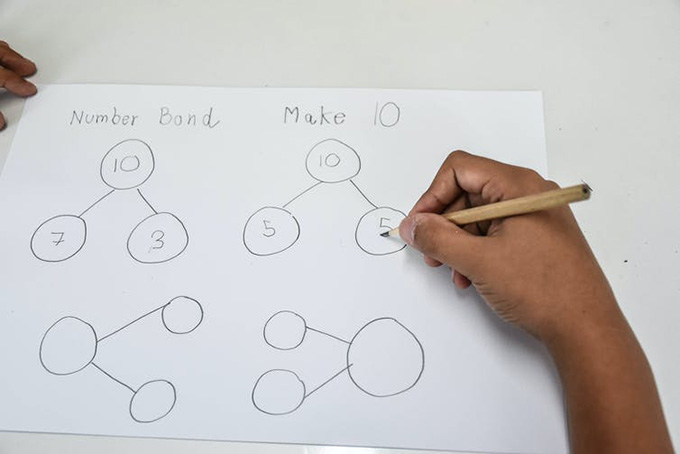
School closures have left many parents in charge of overseeing their children’s education at home. If you are one of them, you might be struggling with maths in particular – not least due to having to grapple with topics and techniques you are unfamiliar with, such as number bonds, abundant numbers, chunking and more.
But this is where a positive mindset, and the ability to accept that you are also on a learning path, can help. Here are some tips on the best way to tackle teaching maths you don’t know.
Work together
Think of yourself as accompanying your child towards understanding a new concept, rather than explaining it to them. As a parent, there is a natural desire to provide for and support your child with your experience, but this is impossible when you do not know what you want to explain.
What you are able to do is to tap into is your past experiences of having solved problems and managed challenges. So simply be honest and say to your child that this method is new to you, too, but that you will work to understand it together.
Start small and use props
New concepts can be overwhelming. Start as small as you can, and play around with something concrete – such as buttons or pennies or pieces of Lego – to help you both understand. For instance, your child might be working on number bonds: learning the pairs of numbers that add together to make a particular total.

A child working on number bonds for 10. Phil’s Mommy/Shutterstock
To give an example, the number bonds of seven are two plus five and three plus four. Physically laying out seven buttons and splitting them into two and five, and then three and four, can help both you and your child familiarise yourselves with the concept and then understand how it works.
Think about why it’s useful
Learning maths may seem pointless, and this can lead to frustration. After all, there is not much need to know how to divide 155,252,188 by 19,838 when the calculator on your phone will do it for you.
But this does not mean that you don’t need to do any mental computation at all in life. Perhaps you have a budget of £50 and want to know quickly if buying three items priced £13, £20 and £17 will push you over this total. Your knowledge of number bonds tells you that three plus seven is ten – so 13 plus 17 is 30, which plus the additional 20 puts you perfectly at your budget.
Since the 1980s, theories about the best methods of education have moved away from rote learning, which can cause pupils to disengage from maths. Instead, education experts have championed more engaging methods, based on learning through experience. The maths national curriculum was lagging behind these ideas until the national numeracy strategy was launched in 1999. A further revamp of the national curriculum followed in 2013.
The focus is now on teaching pupils to become problem solvers: fluent in maths with the ability to reason and apply what they have learned. In teaching number bonds, you are helping your child develop a numerical tool that can allow them to effectively process simple computations, which in turn make them more capable of dealing with problems in life or at work.
Avoid the fear factor
It is easy, especially if you have had bad experiences with maths in your past, to give way to panic. Teaching unknown concepts could make what is known as maths anxiety – the irrational fear of anything mathematical – resurface.

Many people suffer from maths anxiety. sakkmesterke/Shutterstock
The risk is that this fear can be passed to your child. This can have consequences for their enjoyment of school – and even for the decisions they make in life.
A simple trick is to not think that you are doing maths, but that you helping your child to learn useful life tools. Giving maths a more friendly name, such as “problem-solving tricks” or “calculation tools” – that better reflects your own abilities – can boost confidence and keep maths anxiety at bay.
Keep it real
Once you and your child have learned a mathematical concept, try to make it more real and use it in everyday life. Make number bonds with biscuits or pieces of fruit. Add up prices of supermarket items. Be creative and make colourful number bond patterns with building blocks or objects such as sticks and leaves you find on a stroll.
Finally, don’t be discouraged if you sometimes struggle. And allow yourself and your child plenty of time to learn a new idea. Some mathematical concepts can be counter-intuitive or hard, and it is fine to sometimes let go, do something else, and come back to it at another time. Try to reward yourself for your successes, and remember that learning in a more positive, playful way will help make homeschooling a positive experience.
Author Bio: Davide Penazzi is Senior Lecturer in Mathematics at the University of Central Lancashire
